Having been in the promotional advertising business for 48 years, the evolution of advertising always fascinated me. I graduated from college in 1977 and thought I would wind up working in an ad agency writing advertising copy. I loved the idea of being creative and getting paid for it as well. As with many things in life things don’t always go as planned. In the fall of 1977, I saw an ad in the New York Times for an “advertising sales” job. When I showed up for the interview, I was told I’d be selling advertising calendars, pens etc. I figured I’d be calling on clients involved with marketing for their companies and be able to make some good connections. When I told my dad about my new job he asked me “How the hell are you going to make any money selling calendars?” and I told him “I guess I’ll sell a lot of them” and so 48 years later I’ve sold a bunch.
I love all types of photography, particularly 19th century images, so when I came across the banner girl images I was hooked. Photos of women from the 1870’s-1890’s wearing assorted items on their dresses advertising all types of merchants seemed to be right up my alley. I included in this blog some of the more interesting images I could find. It is interesting to note that the evolution of the cabinet card, in my opinion, allowed the banner girl concept to flourish. The size of the cabinet cards versus the much smaller carte de viste was a perfect fit for the very detailed photos of these women and their many adornments.
These banner girl images led to a question ruminating in my head. When did formal advertising begin? I envisioned people painting the outside of caves with prehistoric billboards but couldn’t find any documentation of that so I guess that was my own little advertising fantasy.
It seems that in the period from the 1870s to 1900 advertising in America evolved from localized forms to more sophisticated mass-market campaigns. This era saw the rise of newspaper and magazine advertising as lithography emerged and the first advertising agencies, like N.W. Ayer and Sons in 1871, began providing services placing ads in newspapers and writing ad copy. This marked a shift towards a more professional approach to advertising and the development of other advertising formats like early billboards and trade cards came into being as well. Multicolor trade cards became a popular form of advertising, often with blank areas for individual advertisers to customize. These cards were distributed by traveling salesmen and used by a wide range of businesses.
I guess you could caption the above Banner Girl image “Everything but the Kitchen Sink” or perhaps “Oh, my aching back”
Before I concluded this blog, I wanted to find out more about the women that wore these dresses. What were they paid? Did they sew their own dresses? How many hours a day were they working and how did their husbands feel about them working outside the home as this was not the norm at that time. I looked through many different sources but these questions remain unanswered. If anyone has any information on these topics I’d love to find out more.
The Banner ladies remained a mainstream advertising trend from the 1870s until the 1890s. With the introduction of real photo postcards in the early twentieth century, these human billboards of yesteryear fell out of favor.
They serve as a reminder of the innovative ways business advertised their products before the advent of modern technology more than a century ago. I think this woman’s sad expression works perfectly with the fact they are advertising an undertaker! Also check out the salesman’s sample size mini-chair.
Please give me feedback on the blog. Let me know if there is anything I can do to improve it and also feel free to make suggestions for future topics related to 19th century photography or ephemera. Thanks for reading this issue. I hope you enjoyed it as much as I enjoyed researching the topic.

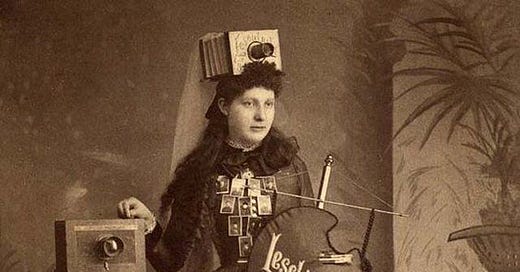



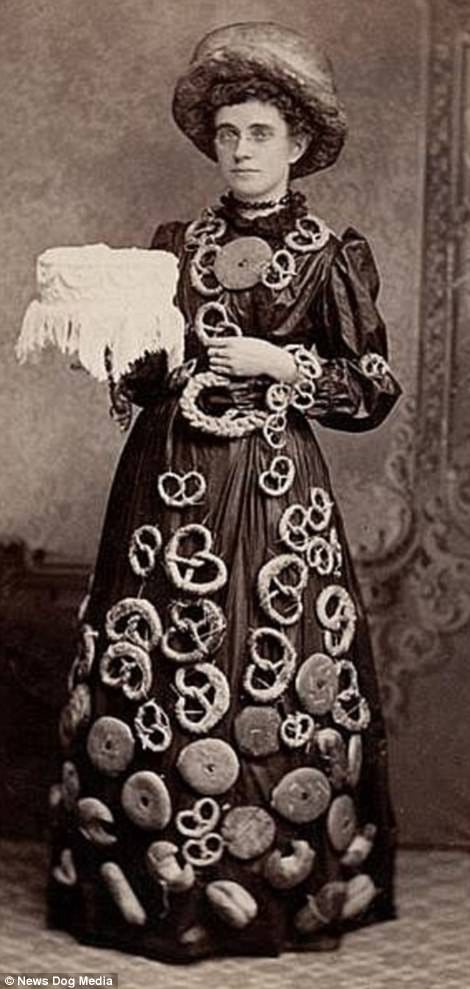
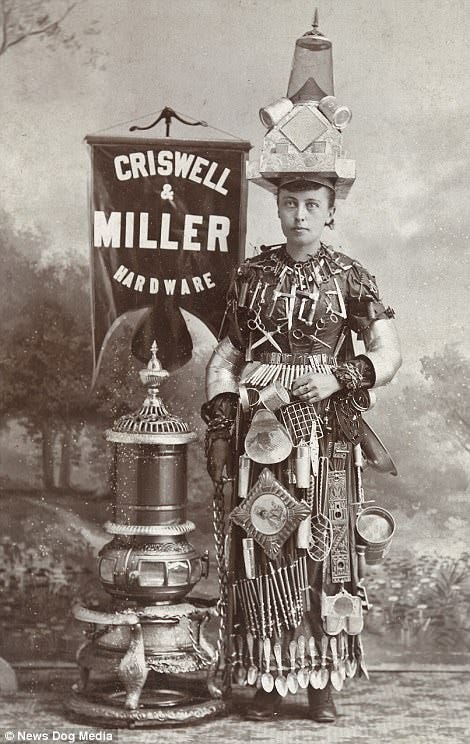
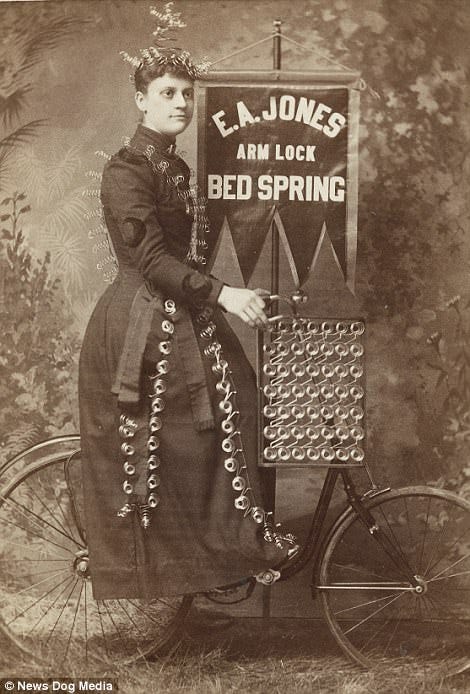
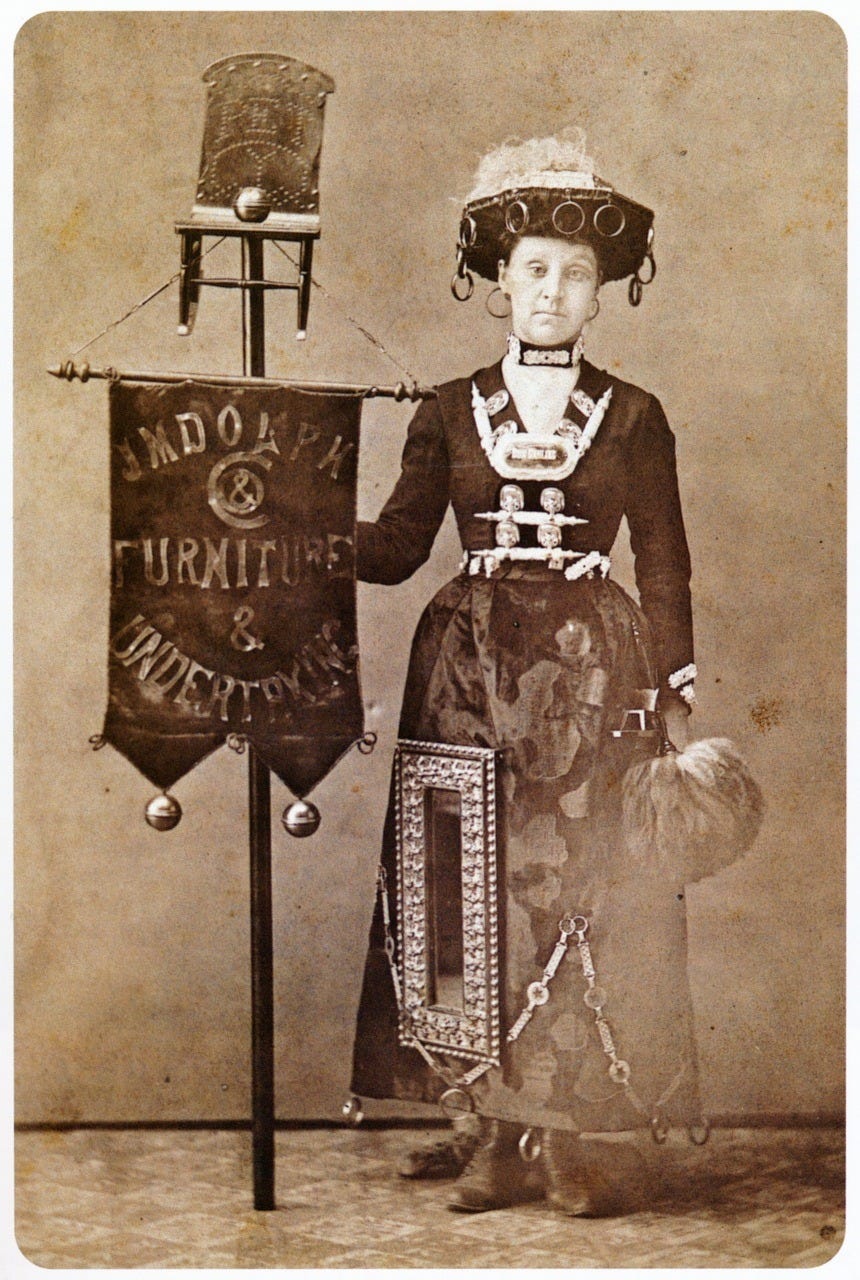
These are great! Thanks.
I think many of these ladies were participants in "merchant's carnivals" and didn't make a profession out of posing in this manner, although there might have been a competition for prizes for the best costume. I came across a news article where a church staged such a carnival, with women from the congregation dressed to represent various local businesses.